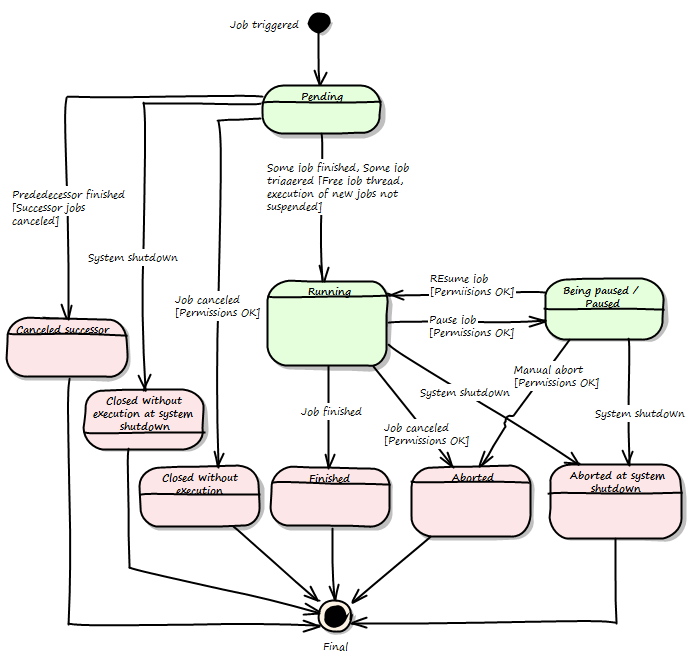

Throughout its lifetime a job can be in several job states. Table 1 lists the states a job can be in along with a description, figure 1 shows the states along with the transitions between them.
Jobs with status running, being paused and paused provide additional progress information. Note that only the jobs in status running are actually processed by the system i.e use processing power. The job states are divided in two groups the active states and the archive states. Jobs with active state are not yet executed or are currently executed, jobs in archive states were either already executed or terminated before or during execution.
Status |
Description |
|
Active states |
Pending |
The job has been triggered but is still waiting for execution. |
Running |
The job is currently being executed, i.e. there is a thread that processes the job on the operating system. |
|
Being paused |
Somebody requested the job that was already in running state to be paused. The job's thread might still be active (i.e. consuming system resources) but it will be paused at the next possibility. |
|
Paused |
The job was paused and the job's thread is inactive i.e. not consuming system resources |
|
Archive states |
Closed without execution |
A job that was queued but was closed by a user before it was executed. |
Finished |
Job was executed and finished execution. Note this does not necessarily mean that the job itself was executed successfully. |
|
Not triggered by predecessor |
The job was queued as a successor of another job - its predecessor. This predecessor did not trigger successor jobs. |
|
Aborted |
A job was already in running state when a user stopped the execution of the job. |
|
Closed without execution at system shutdown |
Jobs in pending state are automatically put to this status when the system shuts down. |
|
Aborted at system shutdown |
Jobs that are executed at the time of system shutdown will be put into this state. |
Table 1: States a job can be in

Figure 1: State a job can be in and transitions between status.
